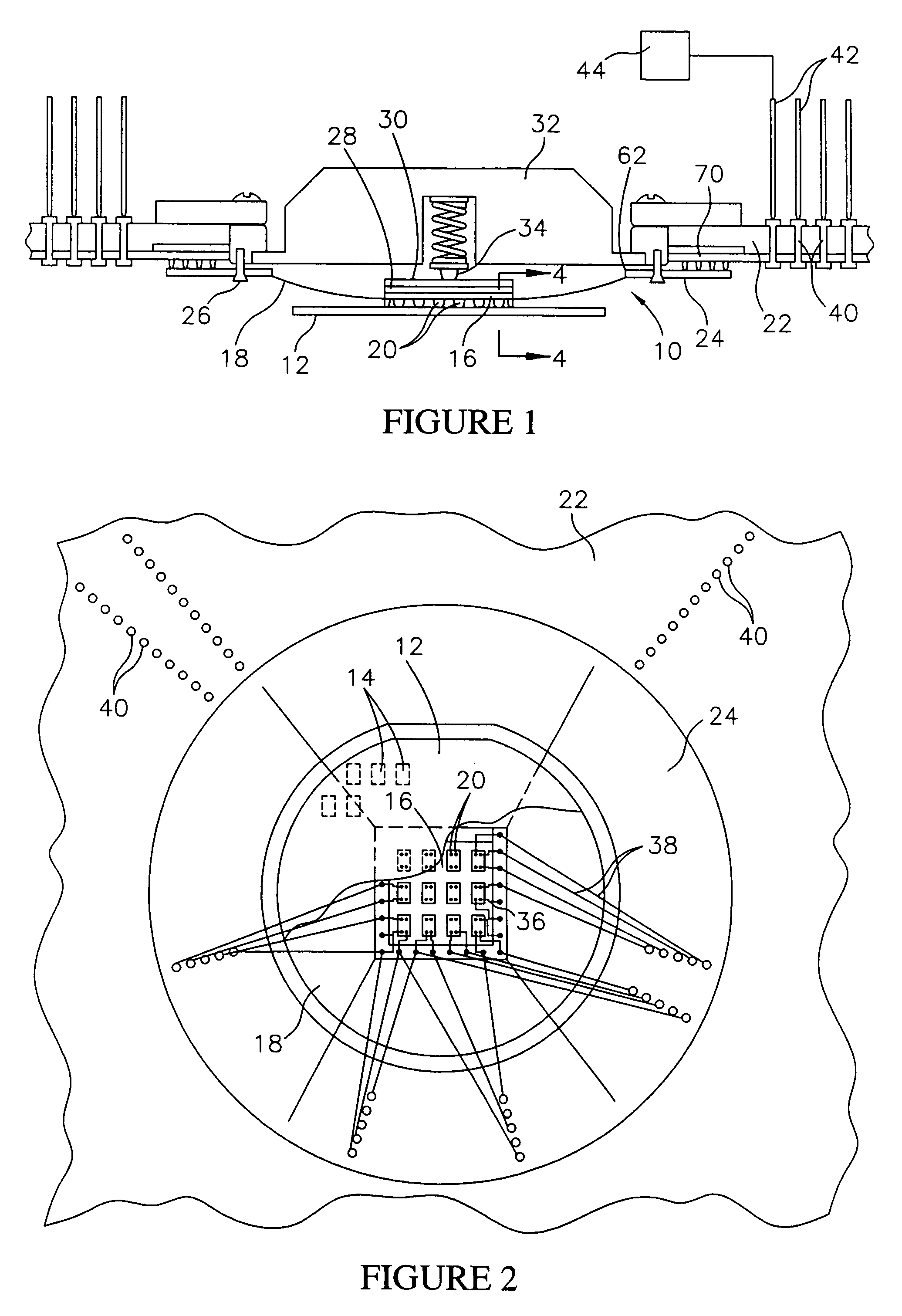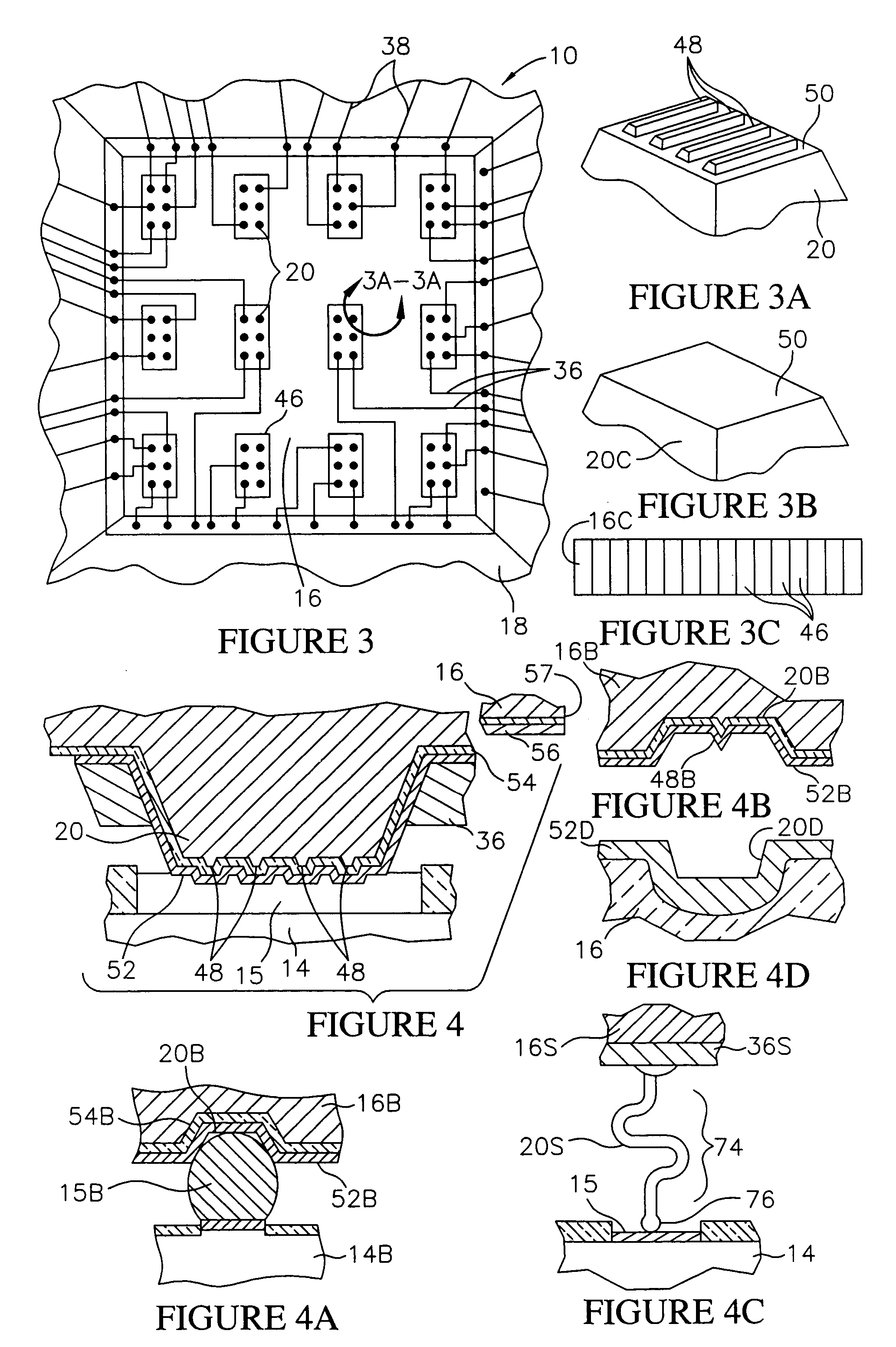Probe card for semiconductor wafers having mounting plate and socket
- Summary
- Abstract
- Description
- Claims
- Application Information
AI Technical Summary
Benefits of technology
Problems solved by technology
Method used
Image
Examples
Embodiment Construction
[0047]Referring to FIGS. 1 and 2, a probe card 10 constructed in accordance with the invention is shown during testing of a semiconductor wafer 12. The wafer 12 includes a plurality of semiconductor dice 14 (FIG. 2) each having a plurality of contact locations 15 (FIG. 4). The contact locations 15 are in electrical communication with the integrated circuits and semiconductor devices formed on the dice 14 and provide electrical access for testing.
[0048]In FIG. 1, the wafer 12 is supported circuit side up for contact with the probe card 10. The wafer 12 can be an entire semiconductor wafer 12 or portion of a wafer or other semiconducting substrate. A conventional testing apparatus such as a wafer probe handler (not shown) can be used to support and bias the probe card 10 and wafer 12 together during the testing procedure. The wafer probe handler can include a chuck (not shown) for supporting the wafer 12. Suitable wafer probe handlers are manufactured by Electroglass and others.
[0049]...
PUM
 Login to View More
Login to View More Abstract
Description
Claims
Application Information
 Login to View More
Login to View More - R&D
- Intellectual Property
- Life Sciences
- Materials
- Tech Scout
- Unparalleled Data Quality
- Higher Quality Content
- 60% Fewer Hallucinations
Browse by: Latest US Patents, China's latest patents, Technical Efficacy Thesaurus, Application Domain, Technology Topic, Popular Technical Reports.
© 2025 PatSnap. All rights reserved.Legal|Privacy policy|Modern Slavery Act Transparency Statement|Sitemap|About US| Contact US: help@patsnap.com



